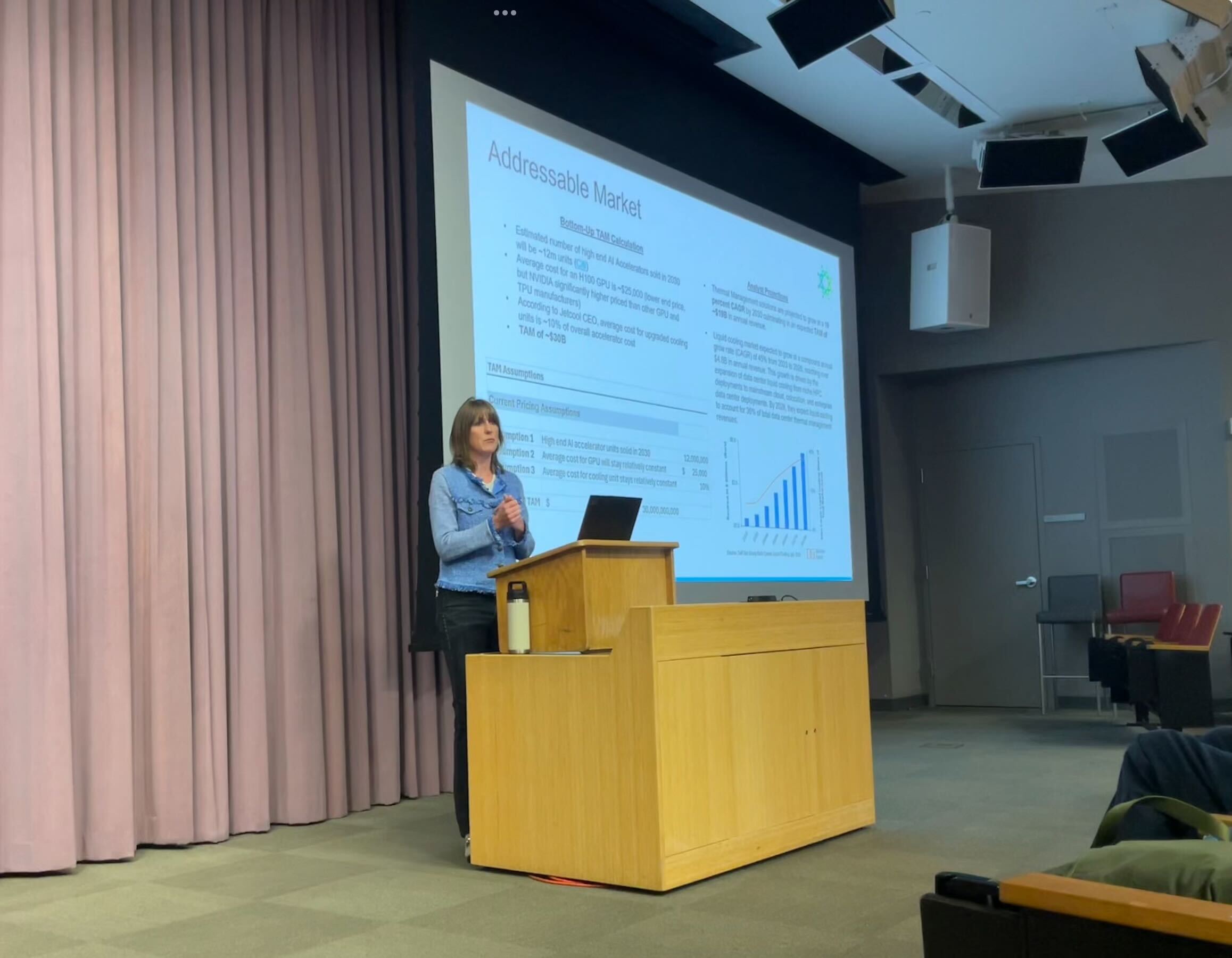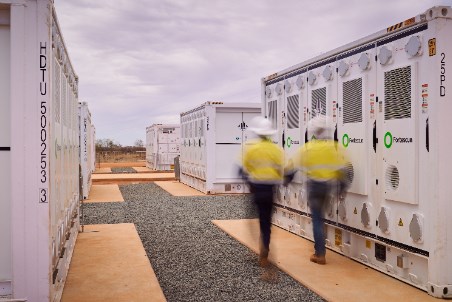Maine renews push for Aroostook County wind development – Maine Public
Report on Maine’s Northern Renewable Energy Development Program and Sustainable Development Goal Alignment
Project Overview and Strategic Objectives
Maine’s Public Utilities Commission (PUC) has formally restarted the procurement process for a large-scale renewable energy project in Aroostook County. The initiative is designed to advance regional sustainability and energy resilience through two primary components:
- Development of 1,200 megawatts of renewable wind power generation.
- Construction of a high-capacity electric transmission line, potentially exceeding 100 miles, to integrate this clean energy into the New England electric grid.
This program is a direct response to rising regional electric demand and the need for significant infrastructure investments to ensure a sustainable energy future.
Alignment with SDG 7: Affordable and Clean Energy
The project is fundamentally aligned with Sustainable Development Goal 7, which seeks to ensure access to affordable, reliable, sustainable, and modern energy for all.
- Target 7.2 (Increase Renewable Energy Share): The development of 1,200 MW of wind power represents a substantial contribution to increasing the share of renewable energy in the regional energy mix.
- Target 7.A (Promote Investment in Clean Energy): The state-led procurement process is designed to facilitate investment in clean energy technology and infrastructure.
- Affordability: By leveraging regional partnerships to defray costs, the project aims to lower long-term energy prices for consumers, directly addressing the “affordable” aspect of SDG 7.
Contribution to SDG 9 and SDG 13: Sustainable Infrastructure and Climate Action
The initiative strongly supports goals related to infrastructure development and climate change mitigation.
- SDG 9 (Industry, Innovation, and Infrastructure): The construction of the transmission line is a critical investment in resilient and sustainable infrastructure (Target 9.1), essential for modernizing the regional grid and accommodating new renewable resources.
- SDG 13 (Climate Action): By generating large-scale, zero-emission electricity, the project is a key strategy for climate action. It will directly reduce regional carbon emissions and dependence on fossil fuels, contributing to climate change mitigation efforts.
Fostering SDG 8 and SDG 17: Economic Growth and Regional Partnerships
The program’s framework emphasizes economic benefits and collaborative efforts, reflecting the principles of several SDGs.
- SDG 8 (Decent Work and Economic Growth): The project is identified as a significant opportunity for economic development within Maine, expected to create jobs and stimulate local economic activity during its construction and operational phases.
- SDG 17 (Partnerships for the Goals): Maine is actively seeking collaboration with four other New England states (Massachusetts, Vermont, Rhode Island, and Connecticut). This multi-state partnership exemplifies SDG 17, aiming to share costs and collectively achieve goals related to grid reliability, cost reduction, and carbon emissions.
Project Timeline and Procurement Process
The development process is structured as a multi-year effort with several key stages:
- Request for Proposals (RFP) Development: The PUC is currently refining a draft RFP based on stakeholder comments. This follows a previous attempt that was halted due to cost and routing concerns.
- Formal Bidding: The commission plans to release the project for competitive bidding by contractors before the end of 2025.
- Long-Term Development: The process will involve considerable debate on the final route of the transmission line and the specifics of the wind generation development.
- Grid Connection: The target for connecting the new renewable power to the New England grid is projected for 2032.
Analysis of Sustainable Development Goals in the Article
1. Which SDGs are addressed or connected to the issues highlighted in the article?
-
SDG 7: Affordable and Clean Energy
- The article’s central theme is the development of a “massive wind power development” to generate “1,200 megawatts of renewable power.” This directly addresses the goal of increasing the availability and use of clean energy sources.
-
SDG 9: Industry, Innovation, and Infrastructure
- The project involves building “extensive electric transmission line” that could “stretch more than 100 miles” to connect the new power source to the New England electric grid. This is a significant investment in developing reliable and sustainable infrastructure to support clean energy.
-
SDG 13: Climate Action
- By bringing renewable generation into the system, the project is expected to have a “positive effect in terms of… lowering… carbon emissions.” This initiative is a direct action to combat climate change by transitioning away from fossil fuels.
-
SDG 17: Partnerships for the Goals
- The article highlights a multi-state collaboration, stating that “Maine hopes that four other New England states will join in supporting the project.” This partnership among Massachusetts, Vermont, Rhode Island, and Connecticut is crucial for defraying costs and achieving regional energy goals.
2. What specific targets under those SDGs can be identified based on the article’s content?
-
Target 7.2: Increase the share of renewable energy
- The project’s explicit goal is to “develop 1,200 megawatts of renewable power,” which directly contributes to substantially increasing the share of renewable energy in the regional energy mix.
-
Target 9.1: Develop quality, reliable, sustainable and resilient infrastructure
- The plan to build a power line “that could stretch more than 100 miles” and upgrade transmission across the region is a clear effort to develop the necessary infrastructure to support a modern, reliable, and sustainable energy system.
-
Target 13.2: Integrate climate change measures into national policies, strategies and planning
- The project, initiated after “Maine lawmakers directed the PUC to procure energy and develop the power line in 2021,” represents the integration of climate action (reducing carbon emissions through renewables) into state-level policy and strategic planning.
-
Target 17.17: Encourage and promote effective public, public-private and civil society partnerships
- The effort to have “four other New England states… join in supporting the project” is a direct example of a public-public partnership aimed at achieving a common goal of securing new power generation and developing better transmission infrastructure.
3. Are there any indicators mentioned or implied in the article that can be used to measure progress towards the identified targets?
-
Indicator for Target 7.2: Renewable energy capacity
- The article specifies a quantifiable amount of new renewable energy to be developed: “1,200 megawatts of renewable power.” This serves as a direct indicator of progress towards increasing the share of renewable energy.
-
Indicator for Target 9.1: Investment in and scale of new infrastructure
- The article mentions the scale of the infrastructure project, including a power line that “could stretch more than 100 miles” and “significant infrastructure investments.” These metrics can be used to track the development of new sustainable infrastructure.
-
Indicator for Target 13.2: Reduction in carbon emissions
- The article implies a key outcome is “lowering cost, in terms of carbon emissions.” While not providing a specific number, the reduction of carbon emissions is a clear, albeit qualitative, indicator of the project’s success in integrating climate measures.
-
Indicator for Target 17.17: Number of partners in the collaboration
- The article identifies a specific number of partners involved in the potential collaboration: “Maine hopes that four other New England states will join.” The formation and formalization of this five-state partnership would be a clear indicator of progress.
4. Summary Table of SDGs, Targets, and Indicators
| SDGs | Targets | Indicators |
|---|---|---|
| SDG 7: Affordable and Clean Energy | 7.2: By 2030, increase substantially the share of renewable energy in the global energy mix. | The development of “1,200 megawatts of renewable power.” |
| SDG 9: Industry, Innovation, and Infrastructure | 9.1: Develop quality, reliable, sustainable and resilient infrastructure… to support economic development and human well-being. | Construction of an electric transmission line stretching “more than 100 miles.” |
| SDG 13: Climate Action | 13.2: Integrate climate change measures into national policies, strategies and planning. | The project’s stated positive effect of “lowering… carbon emissions” as a result of state-directed policy. |
| SDG 17: Partnerships for the Goals | 17.17: Encourage and promote effective public, public-private and civil society partnerships. | A potential partnership between Maine and “four other New England states” (Massachusetts, Vermont, Rhode Island and Connecticut). |
Source: mainepublic.org
What is Your Reaction?
 Like
0
Like
0
 Dislike
0
Dislike
0
 Love
0
Love
0
 Funny
0
Funny
0
 Angry
0
Angry
0
 Sad
0
Sad
0
 Wow
0
Wow
0




















































.jpg.webp?itok=0ZsAnae9#)


























